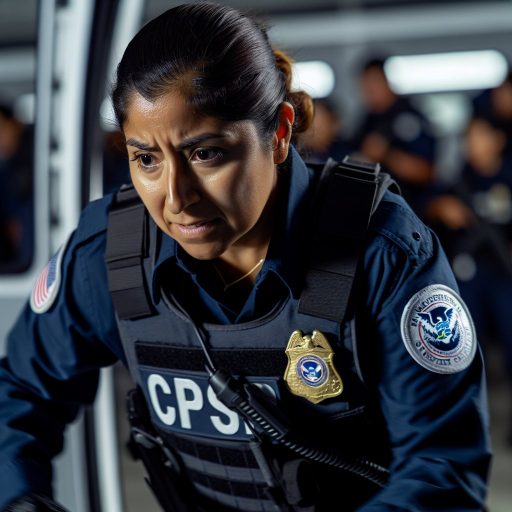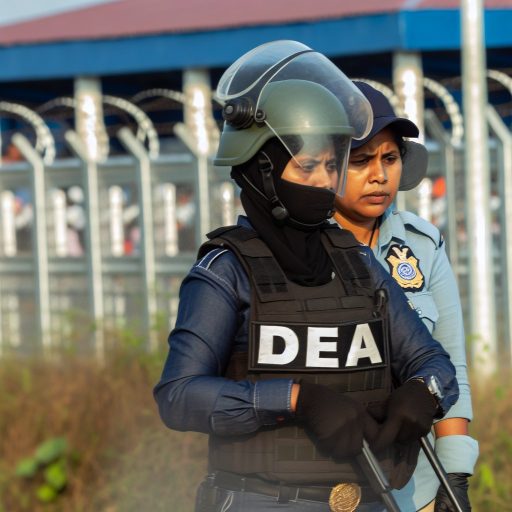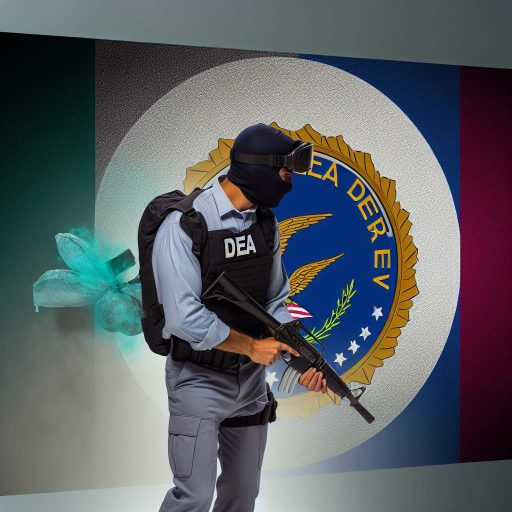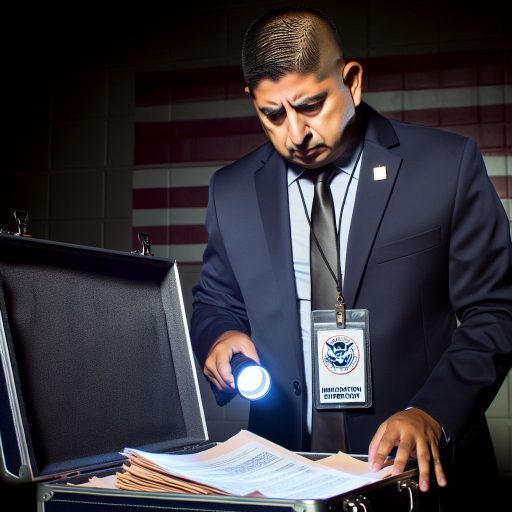Introduction
Public safety officer training is essential for preparing individuals for roles in law enforcement.
This training equips officers with the necessary skills and knowledge to handle various situations effectively.
The training ensures the safety of the public.
Overview of Public Safety Officer Training
Public safety officer training is a comprehensive program designed to equip individuals with the necessary skills and knowledge to serve and protect the community.
This training is essential for those looking to pursue a career in law enforcement, firefighting, emergency medical services, or other public safety-related fields.
Description of the Training Program
The training program typically consists of a combination of classroom instruction, hands-on training, and physical fitness exercises.
Participants learn about laws and regulations, emergency response procedures, crisis management, first aid, and self-defense techniques.
The program is designed to simulate real-life scenarios and challenges that officers may encounter in the field.
Topics Covered in the Training
The training covers a wide range of topics to ensure that participants have a comprehensive understanding of their role as public safety officers.
- Legal aspects of law enforcement
- Crime scene investigation
- Fire prevention and suppression
- Emergency medical procedures
- Conflict resolution
- Physical fitness and wellness
Length of the Training Program
The length of the training program can vary depending on the specific requirements of the agency or organization offering the program.
Some programs may last a few weeks, while others may span several months.
It is important for participants to commit to the full duration of the training in order to gain the necessary knowledge and skills to be successful in their role as public safety officers.
Physical Fitness Requirements
Physical fitness is crucial for public safety officers to perform their duties effectively.
It is essential to be physically fit to handle the demands of the job, including long hours on foot, chasing suspects, and carrying heavy equipment.
Importance of physical fitness for public safety officers
- Enhances overall performance
- Increases endurance and stamina
- Improves agility and flexibility
- Reduces the risk of injuries
- Boosts mental alertness and focus
Being physically fit not only benefits an officer’s health but also ensures they can respond effectively to emergencies and potentially save lives.
Specific physical fitness tests that may be part of the training
- Running: Officers may be required to complete a timed run to assess their cardiovascular endurance.
- Push-ups: Evaluating upper body strength through a set number of push-ups is common in fitness assessments.
- Sit-ups: Abdominal strength is crucial, and sit-ups are often included in fitness tests.
- Agility drills: Testing an officer’s ability to change direction quickly and maintain balance.
- Weight lifting: Assessing physical strength through various weight lifting exercises.
Tips for preparing for physical fitness tests
- Start a regular workout routine that includes cardio, strength training, and flexibility exercises.
- Focus on exercises that target the specific muscle groups needed for the tests.
- Practice the test components regularly to improve your performance and endurance.
- Stay hydrated and maintain a healthy diet to fuel your workouts and promote recovery.
- Get enough rest and allow time for your muscles to recover between workouts.
By prioritizing physical fitness and preparing adequately for the tests, aspiring public safety officers can enhance their chances of success in training and in the field.
See Related Content: Travel Tips from TSA Officers for Smooth Airport Security
Classroom Instruction
Classroom instruction is an essential component of public safety officer training.
It provides officers with the knowledge and skills they need to effectively perform their duties.
Types of Classroom Instruction
During training, public safety officers receive various types of classroom instruction.
Transform Your Career Today
Unlock a personalized career strategy that drives real results. Get tailored advice and a roadmap designed just for you.
Start NowThis includes lectures, discussions, simulations, and hands-on activities.
Examples of Subjects Covered in the Classroom
The classroom curriculum for public safety officer training covers a wide range of subjects.
Some examples include:
- Emergency response procedures
- Crisis intervention techniques
- Laws and regulations related to law enforcement
- Physical fitness and wellness
- Communication and interpersonal skills
- Report writing and documentation
Importance of Theory-Based Learning for Public Safety Officers
Theory-based learning is crucial for public safety officers as it lays the foundation for practical application in real-world situations.
By understanding the theories behind their actions, officers can make informed decisions and respond effectively to emergencies.
Delve into the Subject: Wildland Firefighter Incident Command System
Hands-on Training
Hands-on training is an essential component of public safety officer training programs.
This type of training allows officers to practice real-life scenarios in a controlled environment.
It hones their skills and prepares them for the challenges they may face in the field.
Description of hands-on training exercises
Hands-on training exercises typically involve simulated emergency situations, such as active shooter scenarios, hostage situations, or natural disasters.
These exercises are designed to test officers’ ability to respond quickly and effectively under pressure.
Examples of skills covered in hands-on training
- Firearms training: Officers learn how to safely handle and use firearms, including proper shooting techniques and tactics.
- Physical self-defense: Officers practice techniques for subduing suspects and defending themselves in dangerous situations.
- Emergency medical procedures: Officers are trained in basic first aid and CPR, allowing them to provide immediate assistance to those in need.
- Driving maneuvers: Officers practice high-speed driving techniques and vehicle control to respond to emergencies efficiently.
Benefits of hands-on training for public safety officers
- Real-world experience: Hands-on training gives officers a chance to apply their skills in realistic scenarios, preparing them for the challenges they may encounter on the job.
- Increased confidence: By practicing their skills in a hands-on setting, officers can gain confidence in their abilities and feel more prepared to handle emergencies.
- Improved decision-making: Hands-on training helps officers develop quick thinking and decision-making skills, allowing them to respond effectively in high-pressure situations.
- Team building: Hands-on training exercises often require officers to work together, fostering teamwork and communication skills that are essential for effective public safety responses.
- Compliance with regulations: Hands-on training ensures that officers meet the standards set by regulatory agencies, providing reassurance to the public that officers are well-trained and capable of protecting the community.
See Related Content: How to Become a U.S. Marshal: Step-by-Step Guide
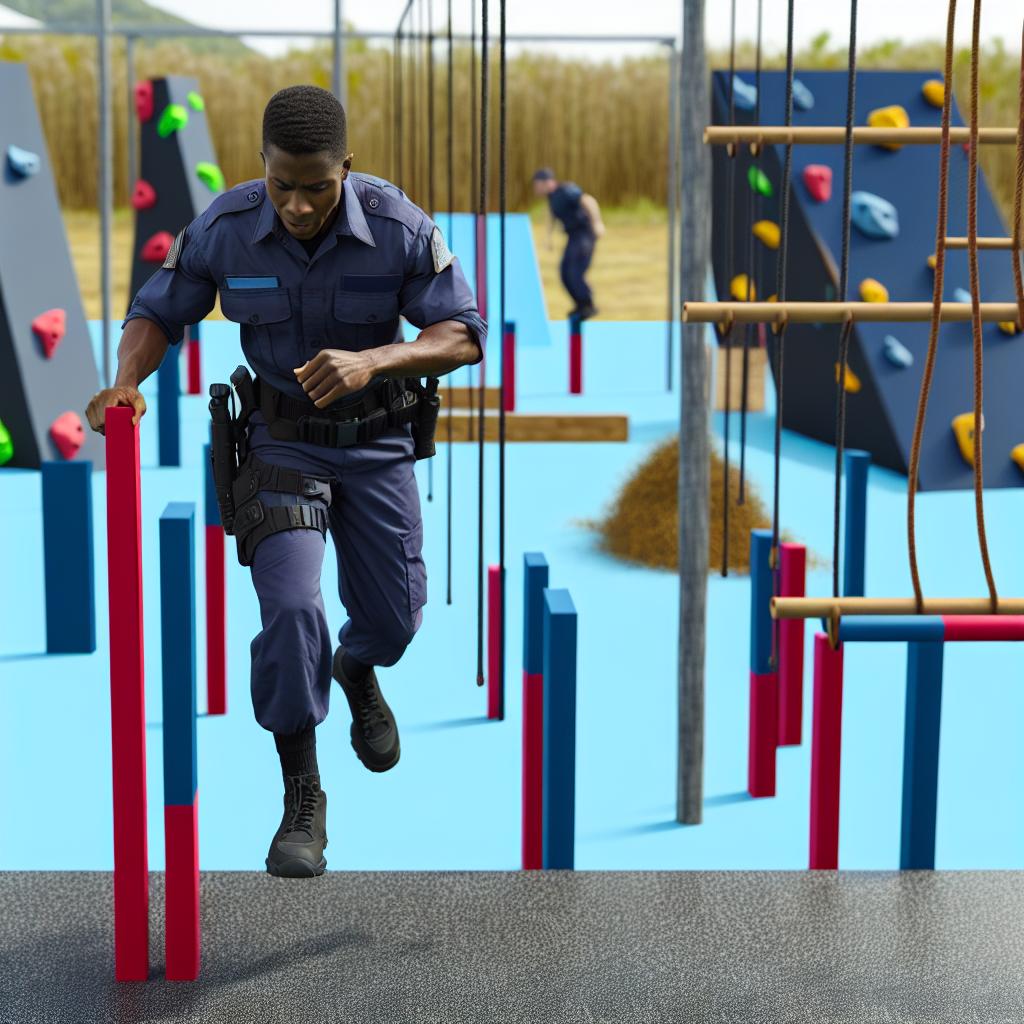
Importance of Firearms Training
Firearms training is crucial for public safety officers as it ensures that they are proficient in using their weapons effectively and responsibly.
It helps officers develop the skills needed to handle potentially dangerous situations with precision and accuracy.
Additionally, firearms training instills confidence in officers, knowing that they have the necessary skills to protect themselves and the public in high-stress situations.
It also emphasizes the importance of adhering to strict protocols and guidelines when using firearms to avoid accidents or misuse.
Overview of Firearms Training Program
Firearms training programs for public safety officers typically include a combination of classroom instruction and hands-on practice at shooting ranges.
The curriculum covers topics such as firearm safety, marksmanship, weapon handling, and decision-making under pressure.
During training, officers are taught how to properly load and unload weapons, aim accurately, and maintain control of their firearms at all times.
Showcase Your Business Today
Reach thousands of readers actively exploring professional services. Publish your business profile and grow your audience now.
Publish NowThey also learn about different types of firearms and ammunition, as well as the legal and ethical considerations of using deadly force.
Safety Measures and Protocols for Firearms Training
- Before any firearms training session begins, officers are required to undergo safety briefings to emphasize the importance of following safety protocols.
- Officers must always treat firearms as if they are loaded, keep their fingers off the trigger until ready to shoot, and never point a weapon at anything they do not intend to shoot.
- Range Safety Officers (RSOs) are present to supervise training sessions, enforce safety rules, and provide immediate assistance if needed.
- Personal protective equipment, such as ear and eye protection, is mandatory during firearms training to prevent injuries and protect officers from potentially harmful exposure to gunfire noise and debris.
- Regular maintenance and inspection of firearms are essential to ensure their proper function and safety. Officers are trained to clean and care for their weapons diligently.
Firearms training is a critical component of public safety officer training programs.
It equips officers with the skills and knowledge needed to handle firearms safely and effectively in the line of duty, ultimately enhancing public safety and protecting the lives of both officers and civilians.
Uncover the Details: Work Environment of Parole Officers
Scenario-based Training in Public Safety
Scenario-based training is an essential component of public safety officer training programs.
In these exercises, trainees are placed in realistic situations that they may encounter in the field.
Explanation of Scenario-based Training Exercises
In scenario-based training, trainees are presented with a specific scenario or problem that they must resolve.
These scenarios are designed to test the trainee’s knowledge, skills, and decision-making abilities.
For example, a scenario may involve responding to a simulated emergency situation.
In this scenario, the trainee must assess the scene, provide medical assistance,
and take appropriate action to ensure the safety of all individuals involved.
Benefits of Scenario-based Training for Real-life Situations
Scenario-based training provides trainees with hands-on experience in dealing with real-life situations.
This type of training allows trainees to apply their knowledge and skills in a realistic setting.
Such experience can better prepare them for the challenges they may face on the job.
Additionally, scenario-based training helps trainees develop critical thinking and decision-making skills.
By placing trainees in challenging scenarios, they learn how to think quickly.
Trainees also learn to make effective decisions under pressure.
Examples of Scenarios Used in Training
Some common scenarios used in public safety officer training include active shooter situations, vehicle accidents, medical emergencies, and domestic violence incidents.
For example, trainees may be asked to respond to a simulated active shooter situation.
In this scenario, they must neutralize the threat, evacuate civilians,
and coordinate with other emergency responders.
Overall, scenario-based training is an effective way to prepare public safety officers.
This training equips them for unpredictable and high-stress situations they may encounter in the field.
By providing realistic scenarios and hands-on experience, trainees can develop the skills and confidence necessary.
Ultimately, this enables them to protect and serve their communities effectively.
Public Safety Officer Training Overview
Public safety officer training is a critical component for those looking to serve and protect their communities.
Training typically covers topics such as law enforcement tactics, emergency response procedures, and conflict resolution skills.
Physical Fitness Requirements
Participants can expect to undergo rigorous physical training to ensure they are fit for the demands of the job.
This includes activities such as running, weightlifting, and obstacle courses to build strength and endurance.
Hands-On Training Exercises
Public safety officers will engage in simulated scenarios to hone their skills in real-life situations.
This practical experience helps officers develop quick thinking and decision-making abilities under pressure.
Firearms and Tactical Training
Officers will receive instruction on the proper use of firearms, including marksmanship and situational awareness.
Tactical training will teach officers how to respond to active shooter situations and other high-risk incidents.
Legal and Ethical Considerations
Training will cover the laws governing law enforcement actions and the ethical responsibilities of public safety officers.
Understanding these principles helps officers uphold the law while respecting the rights of individuals.
Importance of Training for Community Safety
Public safety officer training is essential for preparing individuals to serve their communities effectively.
Aspiring officers are encouraged to pursue training opportunities to develop the skills needed for success.
Resources are available for those interested in pursuing a career in public safety, providing a pathway to excellence in service.
Additional Resources
Careers at the California Department of State Hospitals – Jobs …
Leadership | United States Capitol Police
Showcase Your Business Today
Reach thousands of readers actively exploring professional services. Publish your business profile and grow your audience now.
Publish Now[E-Books for Sale]
The Big Book of 500 High-Paying Jobs in America: Unlock Your Earning Potential
$19.99 • 500 High-Paying Jobs • 330 pages
Explore 500 high-paying jobs in America and learn how to boost your career, earn more, and achieve success!
See All 500 High-Paying Jobs of this E-Book
1001 Professions Without a Degree: High-Paying American Jobs You Can Start Now
$19.99 • 1001 Professions Without a Degree • 174 pages
Discover 1001 high-paying jobs without a degree! Unlock career tips, skills, and success strategies for just $19.99!

